Donegal Crest Photos Origin Meaning
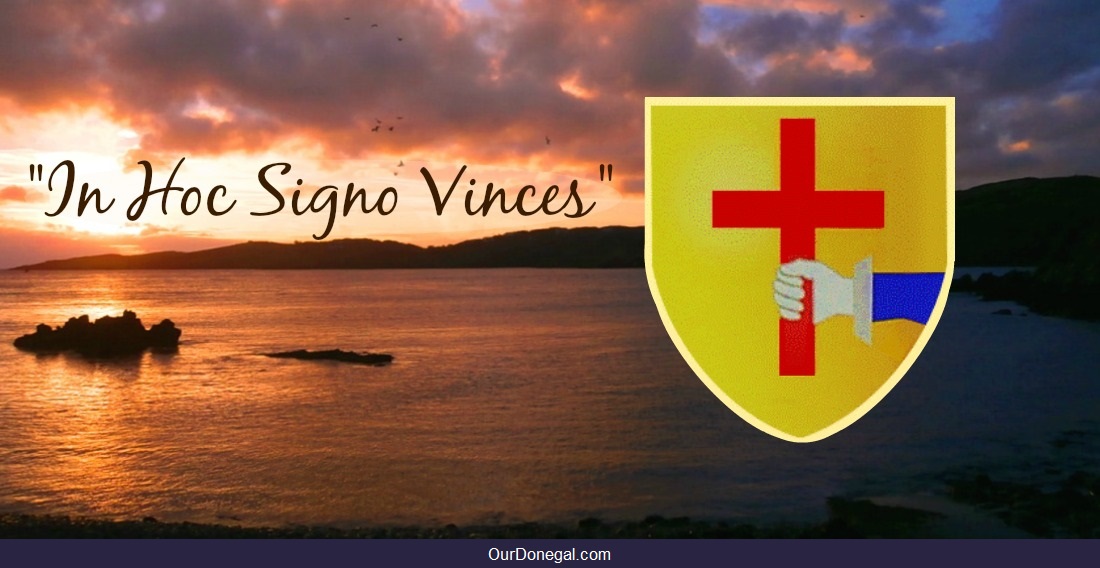 Donegal Crest with Latin motto "In Hoc Signo Vinces" (In This Sign Victory)
Donegal Crest with Latin motto "In Hoc Signo Vinces" (In This Sign Victory)Description, Celtic History of the Donegal Crest
If you happen to be in Donegal during All-Ireland Gaelic football season, and the county has reached the 'Finals', you couldn't miss the bright cheerful display of flags, bunting, and slogans adorning the entire county. (Yes, Ireland has its own unique brand of football . . . Gaelic football!)
As
the excitement grows, people decorate their cars with green and golden yellow paint, and
all kinds of suitably attired mascots begin popping up in all sorts of places!
Donegal Crest Description
Among that vast eruption of green and yellow expressions of team support, you'll notice numerous images of Celtic shields.
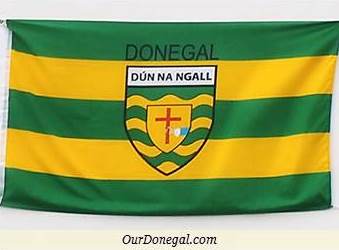 A Donegal flag featuring the iconic crest
A Donegal flag featuring the iconic crestEvery shield features a striking deep red cross, usually set against a golden yellow background. Those components are generally referred to as the 'Donegal crest'.
The Donegal Crest is based on an ancient Celtic Coat of Arms of immense historic significance.
It is incorporated into the official crest of Donegal GAA, the Donegal branch of the Gaelic Athletic Association. That's why you see so many images of it displayed during the 'All-Ireland' season. (The GAA is an all-Ireland sports body.)
Variations of the cherished symbol embellish logos and coats of arms of many organizations associated with Donegal, including the Donegal County coat of arms (skip down to see image).
But where did it originate?
Celtic Origin, Meaning of the Donegal Crest
To discover the crest's origin, we have to go back in
time by over 1500 years, to C.AD433. That's how long this treasured
image has endured, although to the best of our knowledge, the original is sadly long lost.
A Dynasty of Celtic Kings... and Saint Patrick
At that time the Celtic tribes of Ireland were in the earliest stages of abandoning paganism and a barbaric, violent culture to follow the peaceful path of Christ, led by Saint Patrick.
St.Patrick had heroically returned to the land of his former captors and enslavement to promote Christianity among them.
Laeghaire MacNiall was the reigning High King of Ireland. One of his brothers, a heroic Celtic warrior king, Conall Gulban reigned in the Southern Donegal territory known as Tír Chonaill, or Tyrconnell.
Both kings were sons of that famous former High King of Ireland
Niall of the Nine Hostages, and King Conall was an ancestor of the
powerful O'Donnell dynasty, so strongly connected with Donegal Town.
King Conall Becomes a Christian
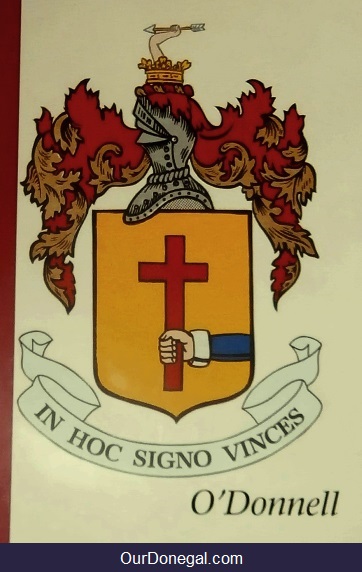 O'Donnell Coat of Arms exhibited in Donegal Castle
O'Donnell Coat of Arms exhibited in Donegal CastlePart of St.Patrick's strategy of non-violence appears to have involved the Christianizing of royalty, nobility and druids first, trusting that the people would be inspired to follow.
King Conall Gulban is believed to have been the first among Gaelic Ireland's privileged classes to accept the teachings of St.Patrick.
The Donegal king embraced the Christian faith with a remarkable zeal and was duly
baptized by the great saint.
How a Celtic King's Battle Shield became the Origin of the Donegal Crest
King Conall's enthusiastic conversion to Christianity pleased St.Patrick.
According to ancient manuscripts such as the 'Life and Acts of Saint Patrick' and 'Lebhar Inghine i Dhomhnaill' ('The Book of Inghine O'Donnell') . . .
The great saint lifted his sacred crozier, the 'Bachall Íosa' and, striking the King's battle shield with it, caused the royal shield to become miraculously engraved with the sign of the Cross.
Thus King Conall's shield became the first Coat of Arms in the history of Ireland ever recorded.
It predates the impressive English heraldic system from the twelfth century by more than seven hundred years.
The Meaning Behind the Powerful Symbol
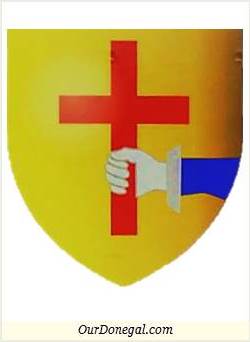 Donegal Town Coat of Arms
Donegal Town Coat of ArmsSt.Patrick then gave King Conall the popular Latin motto of the ancient Roman Emperor Constantine "In Hoc Signo Vinces", meaning 'In this sign is your victory'.
That is, that from then on King Conall and his descendants would be
victorious, as long as they followed the sign of the Cross and Christ's
teachings faithfully.
The Birth of a Beautiful Tradition
The tradition of King Conall's cross was continued by his descendants, the most famous being Saint Columba of Scotland's Iona Island. The Donegal-born Celtic saint, also known as Saint Colmcille, was the king's great grandson.
The tradition was also faithfully continued by King Conall's previously mentioned descendants, the O'Donnell dynasty. It was the O'Donnells who built the historic Celtic castle and abbey in Donegal Town. Variations of the popular Coat of Arms were adopted by them wherever they settled around the world.
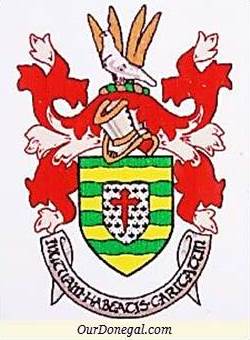 County Donegal Coat Of Arms
County Donegal Coat Of ArmsOver time, representations of King Conall's cross were incorporated into the Coat of Arms and logos of various organizations and civic authorities associated with Donegal County. Among the more notable are:
- The Donegal branch of the Gaelic Athletic Association (Donegal GAA)
- The Donegal County Fire Brigade
- Donegal County Council
- That historic seat of the O'Donnells, Donegal Town
- County Donegal
So now you Know about the Donegal Crest
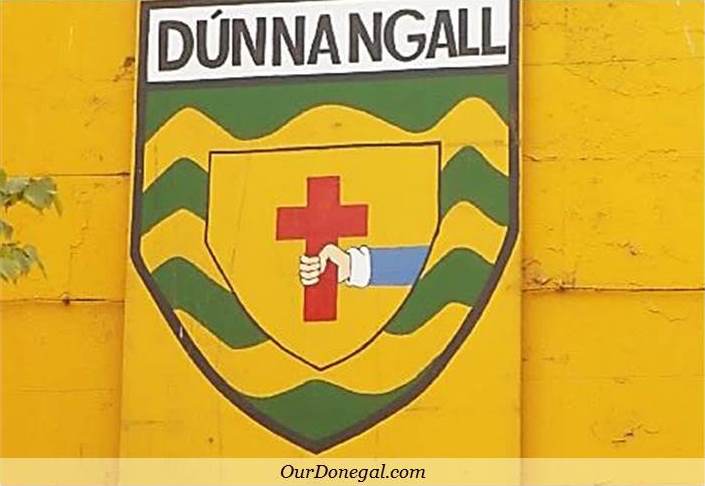 Donegal Crest art for All-Ireland Gaelic football win. Pettigo
Donegal Crest art for All-Ireland Gaelic football win. PettigoYou know what the crest is, what it means, and its timeless popularity.
You also know about the two great Celtic heroes, Saint Patrick of Ireland and King Conall Gulban associated with it, plus the wonderful Celtic history behind it.
So, next time you see Donegal Gaelic football supporters display images of it during major sporting events, If you didn't already know the significance of the iconic 1500 year old symbol . . . you do now!
If you like sport, grab some football scarves and take family and friends to a Donegal Gaelic football match for a day of fun and excitement!
You Might Also Like
King Conall Gulban (link opens new window)
A Wikipedia page. Scroll to bottom to find King Conall's family tree.
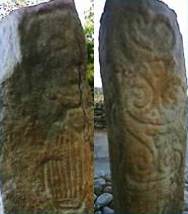
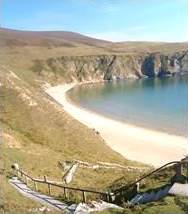
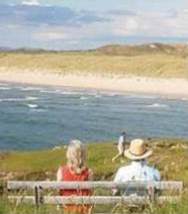
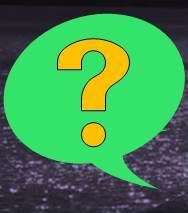

New! Facebook Comments